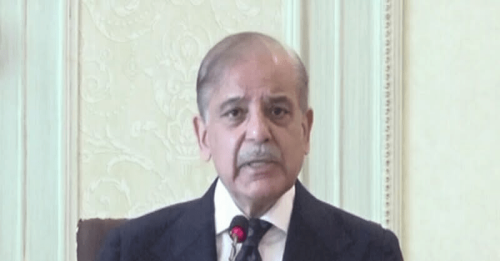“WHENEVER an elder dies, a library burns down.” When Dr B.N. Goswamy (India’s pre-eminent art historian) died and was cremated on Nov 17 in Chandigarh, a second Library of Alexandria was burnt with him.
A humanist of profound learning, he could produce tomes of unimpeachable erudition at the drop of an idea. Who else but a scholar with his radial knowledge could have written authoritative works on Pahari painters, Sikh devotional art, Indian textiles, Cutch painting, South Indian bronzes, pichwais or temple hangings, or catalogued important Indian art collections within India and abroad?
Brijen Goswamy was born on Aug 15, 1933, in Sargodha. He rarely spoke of this unlikely cradle of his talents. Even when he visited Pakistan for the first and only time in 2016, he never expressed a desire to visit his birthplace, unlike Khushwant Singh, for whom Hadali (near Sargodha) was another Bethlehem.
Brijen began his career as a member of the Indian Administrative Service in 1956. He resigned in 1958 and joined his alma mater, Punjab University Chandigarh, where in 1961 he obtained his doctorate in Pahari painting. His examiners were British — A.L. Basham and W.G. Archer, an indication of how sparse home-grown Indian scholars were then.
Goswamy was a humanist of deep learning.
Bill Archer from London and Dr M.S. Randhawa in Chandigarh had the strongest impact on Brijen’s studies and career. Investigations by them into the work, genealogies and migrations of little-known painters in the Pahari hill states (now part of Himachal Pradesh) had expanded the public’s understanding of this unique genre of painting, known once generically as Kangra painting.
Brijen’s doctoral thesis matured into a seminal essay — Pahari Painting: the Family as the Basis of Style, publishedin Marg magazine in 1968. In it, he proposed more than an alternative approach to art investigation: he offered a new catechism.
Until then, as Marg’s editor Mulk Raj Anand wrote in his introduction: “Two tendencies have […] dominated the field of criticism: one obvious manner of approach has been to analyse the various styles in relation to each other; while the second, more tentative, method has been to discover the artists behind the anonymity, through genealogies and slowly build up possible ascriptions of certain pictures and manuscript illustrations to individual painters on grounds of style.”
Brijen intended to do just that. He argued: “The studies of Pahari painting may become more meaningful if the styles within it are identified and isolated from each other not exclusively on the basis of geography or region, but with reference to the kalams or distinctive styles of the known artist-families in the hills of the Punjab.”
“Classifications of styles or idioms by states (like Basohli, Chamba, Guler, Kangra, Nurpur, etc.) sometimes attaches exaggerated importance to political barriers, which in fact were very fluid […] and did not take into account the migrations of artists.”
Brijen discovered clues about these movements in bahis maintained by the pandits at Hardwar, in which notations were made by generations of artists who brought the ashes of their relatives or patrons for immersion in the Ganges. For stylistic evidence, he used Pahari paintings in the Chandigarh Museum. It contained a third of the pre-1947 Lahore Museum collection.
In 1966, I catalogued the remaining (over 500) paintings in Lahore. I was confronted by a conundrum. Should I follow a state-wise classification as Bill Archer had done, or use Brijen’s innovative attribution to individual artists and their families?
Publishing imperatives forced me to follow Bill’s precedent, especially after he endorsed my book as “an indispensable sequel and complement” to his own two-volume Indian Paintings from the Punjab Hills (1973). My book appeared in 1977.
After years of correspondence, Brijen and I met for the first time in Los Angeles in 1977. Since then, we lectured together in London and Kasauli, and hosted each other in our homes in Chandigarh and Lahore.
Our shared interests rendered our friendship borderless. I marvelled at his output, particularly his Pahari Masters (1992) and monographs on Nainsukh of Guler (1997) and Nainsukh’s elder brother Manaku of Guler (2017). Brijen’s achievements were commemorated in 2013 in an 80th birthday Festschrift — Indian Painting — to which 40 admirers (including myself) contributed essays.
His final book, The Indian Cat: Stories, Paintings, Poetry, and Proverbs, appeared just before his death. Using cats as a leitmotif, Brijen interwove ancient texts and modern literature with poems by Mir Taqi Mir, Mirza Ghalib, Iqbal, even Vikram Seth. It is an intimate, personal tribute to friendly felines, blessed with nine lives.
Brijen filled his first 90 year-long life to the brim. He deserved eight more to demonstrate the gamut of his genius.
The writer is an author.
Published in Dawn, November 23rd, 2023













































Dear visitor, the comments section is undergoing an overhaul and will return soon.